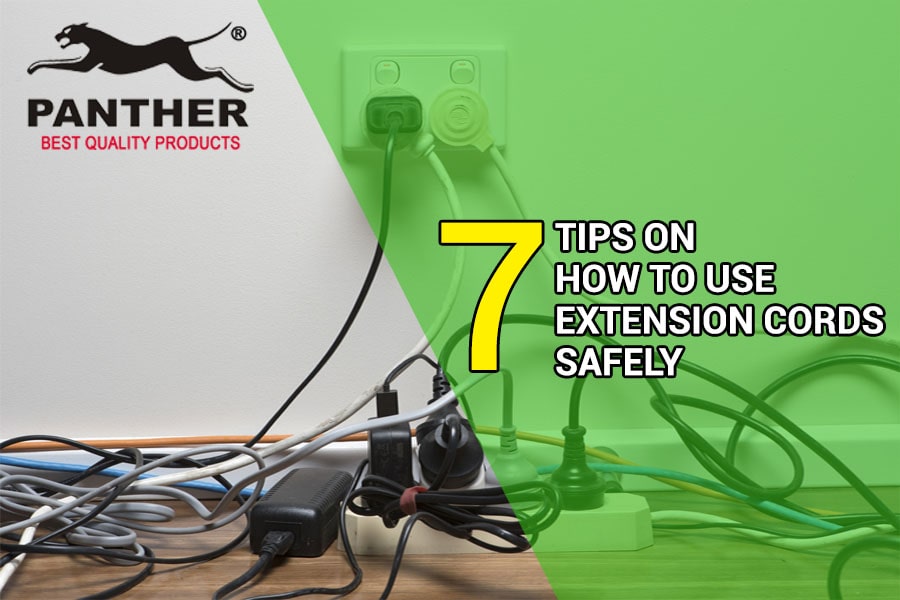
Table of Contents
Extension cords are incredibly useful tools when you need to power an appliance that’s nowhere near a power outlet. This is particularly helpful when you’re living in a condominium in the Philippines that has skimped on the number of outlets found in each room, or perhaps you’re renting and can’t add more outlets in the exact area where you need the power.
Having said that, we do want to flag that the use of an extension cord is typically meant as a temporary solution. If you find that you consistently need power in that particular area (e.g. kitchen, office), then you should consider installing additional power outlets where you need them.
Still, for those who are using extension cords, here are 7 safety tips we want you to keep in mind.
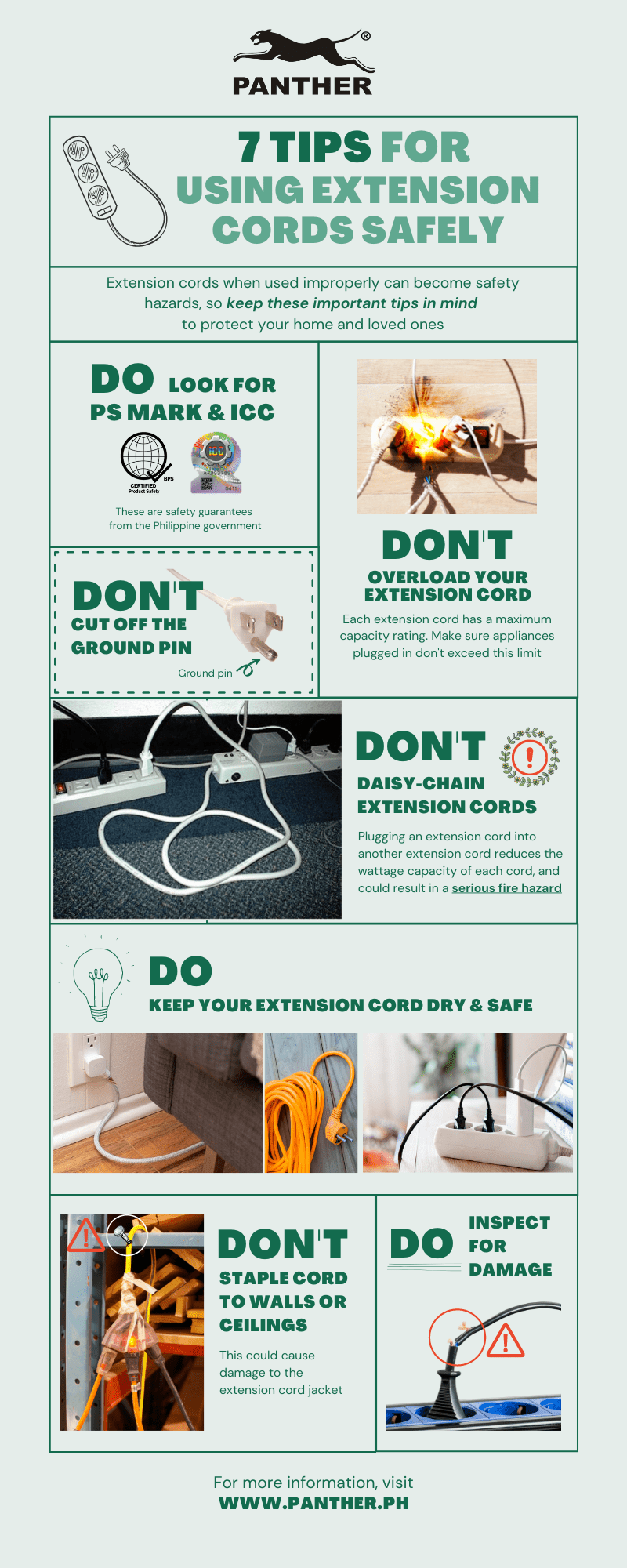
#1 Don’t overload your extension cord
Every extension cord has a maximum capacity rating, or a limit on the power it can safely conduct. To make sure you won’t overload your extension cord, do check the power requirement of the appliance you plan to plug into the extension cord. If you’re planning to plug in multiple devices, add up all the power requirements.
Keep in mind that electrical appliances all consume different power ratings – a lamp vs a sound system vs a freezer vs an aircon would have very different power consumption patterns. In that regard, a light duty extension cord that works well for your lamp would probably not be suitable for your KitchenAid mixer.
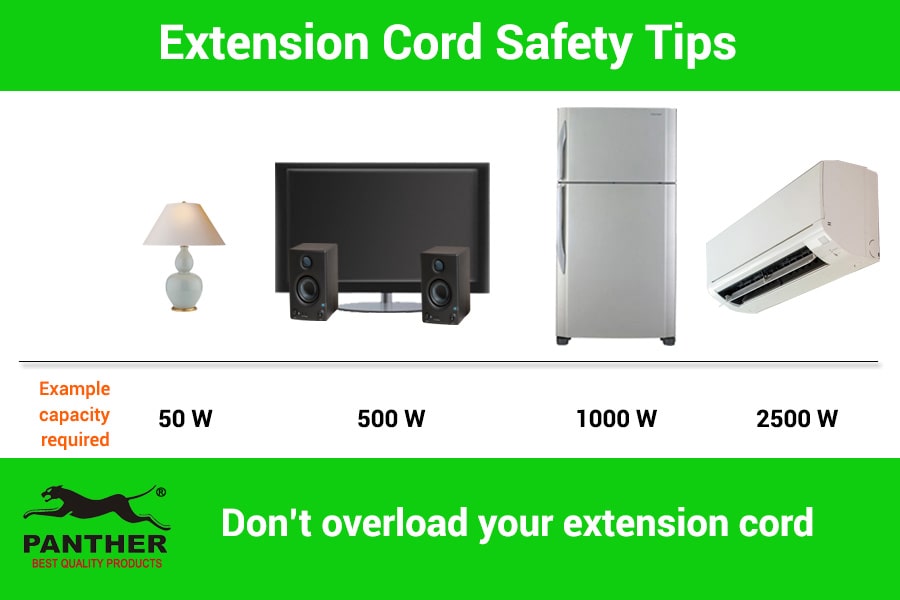
Okay, once you’ve calculated the total power requirement of the devices you plan to plug in, check and make sure your extension cord’s capacity rating is higher.
Remember, using an improperly sized extension cord will result in overload.
Let us provide a concrete example. We often get this question:
“Is the Panther extension cord safe to use for my 1.4 Amps refrigerator?”
Step 1: Consider the power requirement of a 1.4 Amps refrigerator
1.4 Amps aircon at 230V AC is equivalent to 322 Watts.
However, the refrigerator is a motorized appliance, so we need to take into account the startup power requirement.
To do that, we multiply 322 Watts by 3. This gives us a max power requirement of 966 Watts.
If you want a more detailed explanation, please see this handy article which provides a step-by-step instruction how to calculate an appliance’s power requirement.
Step 2: Check the rated capacity of the Panther extension cord
All Panther extension cords are rated at 2500 Watts maximum capacity.
Step 3: Is the Panther extension cord capacity greater than the power requirement of the 1.4 Amps refrigerator?
Yes! Therefore, it is safe to use a Panther extension cord with the 1.4 Amps refrigerator, provided the other appliances you plug in to the same extension cord would not exceed the maximum capacity of said extension cord.
Thankfully, all Panther extension cords also come equipped with a circuit breaker. So in case of overload, the circuit breaker will immediately trip and prevent damage to your appliance. Once that occurs however, we strongly recommend that you unplug the appliance that’s causing overload from the extension cord. Otherwise, it will just continue tripping.
#2 Do use an extension cord that has a PS Mark
The PS Mark isn’t a nice to have. It’s a safety guarantee from the Philippines’ Department of Trade and Industry that the extension cord you’re using has been tested by independent testing laboratories and the Bureau of Philippine Standards (BPS), and are therefore certified to be of good quality, safety and reliability.
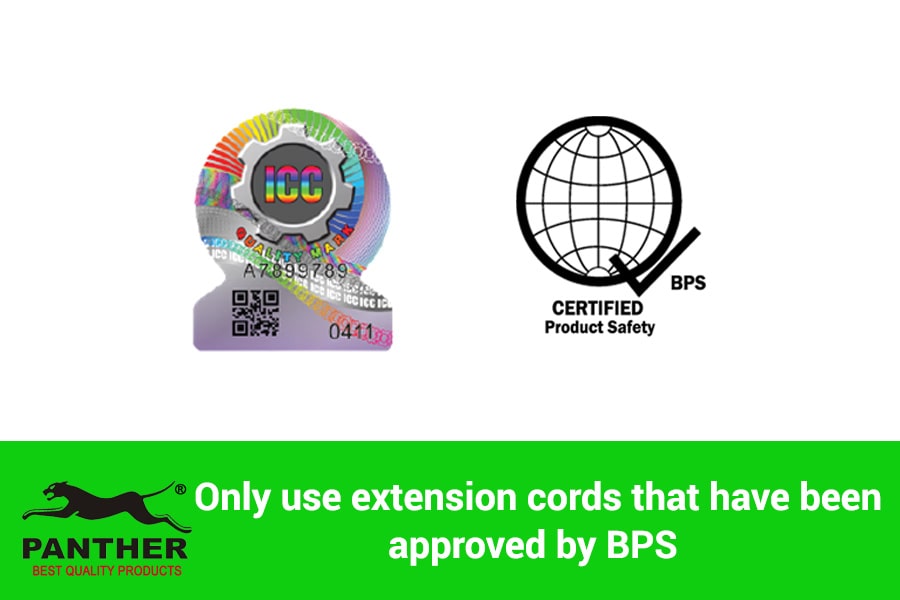
Here at Panther, all our extension cords are certified under PS License Q-1474.
#3 Don’t cut off the ground pin to force a fit
You might have noticed Panther extension cords come with either two-prong plugs or three-prong plugs. This is because we recognize that not all Philippines homes come with three-prong grounded outlets.
We highly discourage removal or tampering of the grounding pin just to make the extension cord fit into a two-prong outlet. This defeats the purpose of the grounding pin, and could even result to an electrical shock!
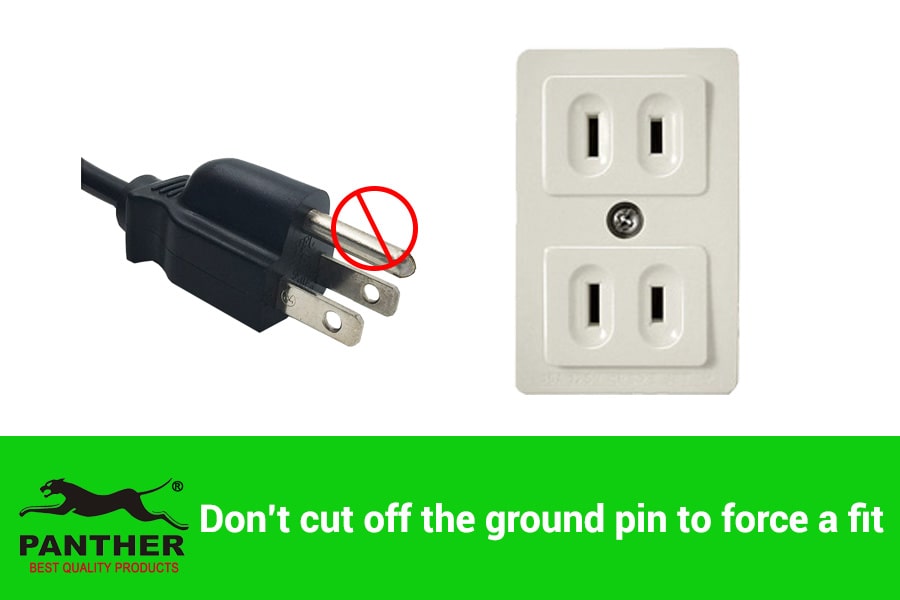
#4 Do inspect the extension cord for damage before use
We don’t always use our extension cords. Sometimes, you might leave it in your storage room, and only bring it out when you have need it. Regardless, it’s always good practice to check the inspection cord for any cuts or tears in the cord.
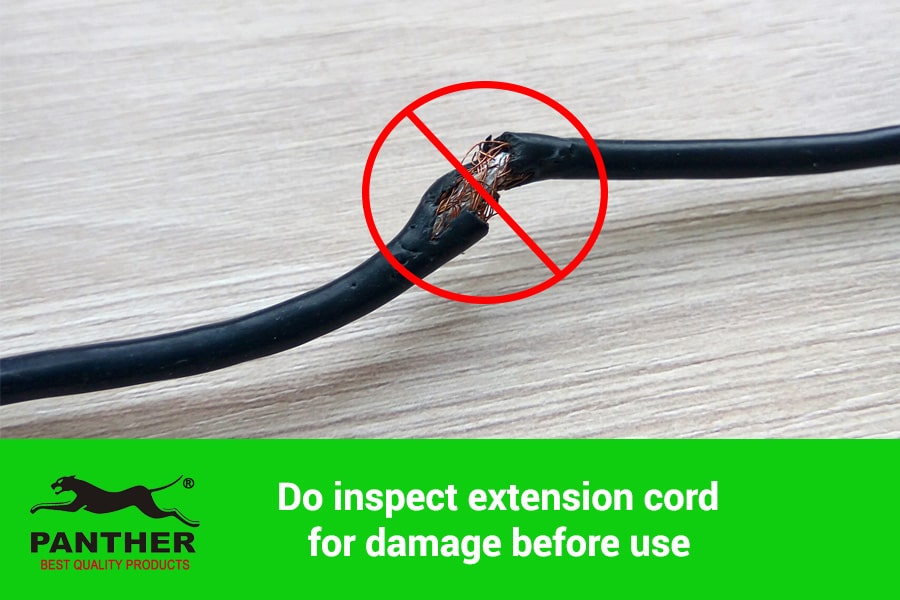
If you see loose or bare wires exposed through the outer jacket, you should immediately discard the extension cord or have it repaired.
#5 Don’t plug in an extension cord into another extension cord
While plugging in an extension cord into another extension cord (also known as daisy-chaining) might seem like a good workaround when your existing extension cord length is too short for your needs, we advise you to NOT do this.
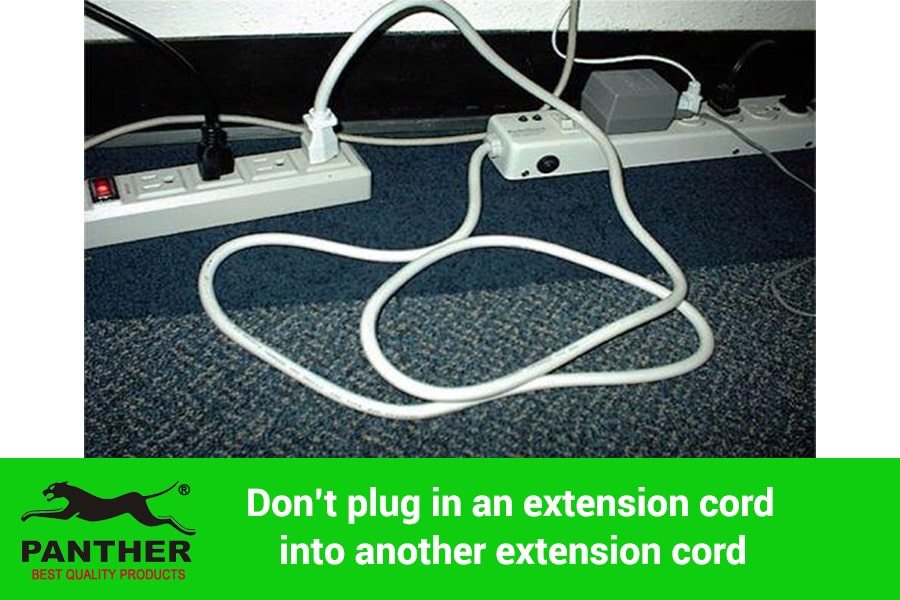
Doing this reduces the wattage capacity of each cord and could result in voltage drop, causing potential overload and creating a serious fire hazard.
If you need a longer length, then we advise you to purchase an extension cord with the appropriate length instead. For example: Panther extension cords come equipped with 1.75m, 3m and 5m cord length. If you need longer cords, we can also manufacture made-to-order extension cords built to your specifications.
#6 Do keep the extension cord in a dry and safe indoor location
As with all electronics, indoor extension cords should be kept in a dry indoor location, as extension cords are vulnerable to moisture and using a wet extension cord could result in a short circuit.
Likewise, we advise users to keep extension cords visible. Where possible, minimize laying extension cords across the room or running through high-traffic areas such as doorways to minimize trip-and-fall injuries.
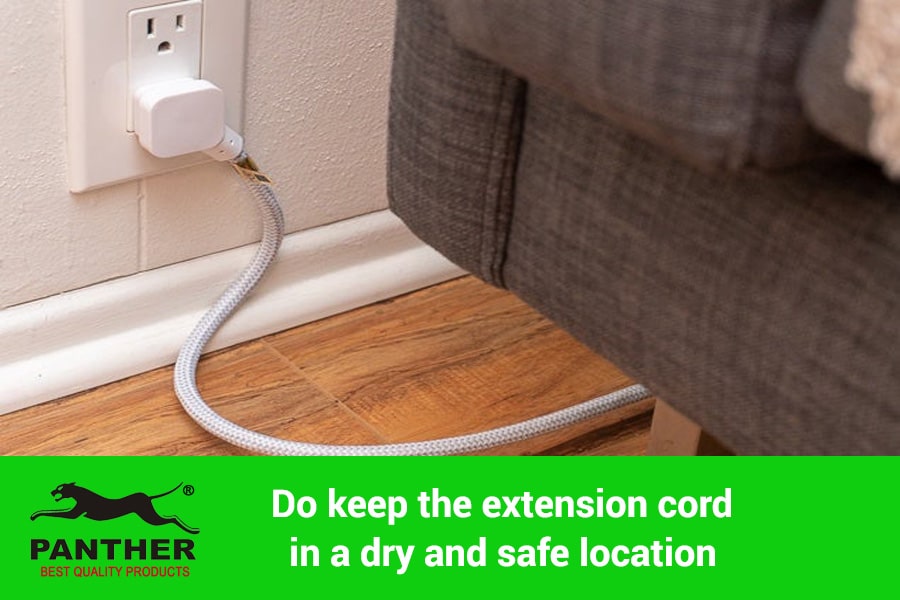
#7 Don’t staple extension cords to the walls or ceilings
Avoid affixing extension cords to walls or ceilings using metal nails or staples through the extension cord jacket. The cords itself are manufactured with a soft jacket to allow for cord flexibility, however this also means it can be damaged and the wires exposed, when you run a nail or staple through it.
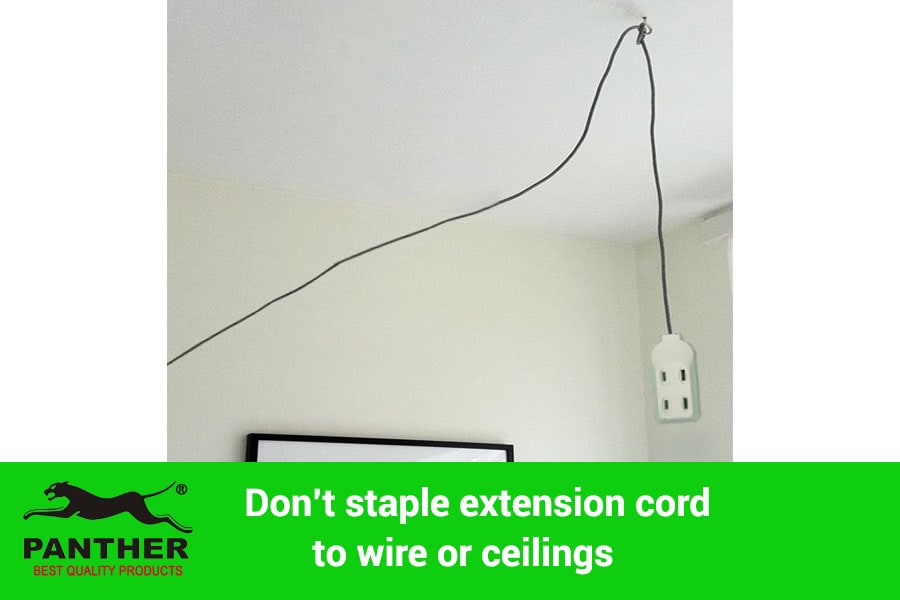

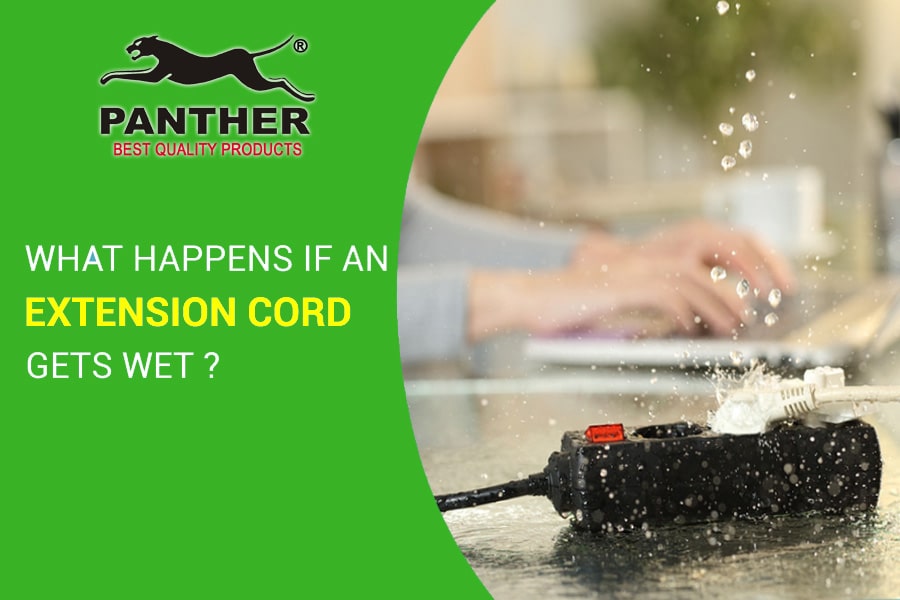
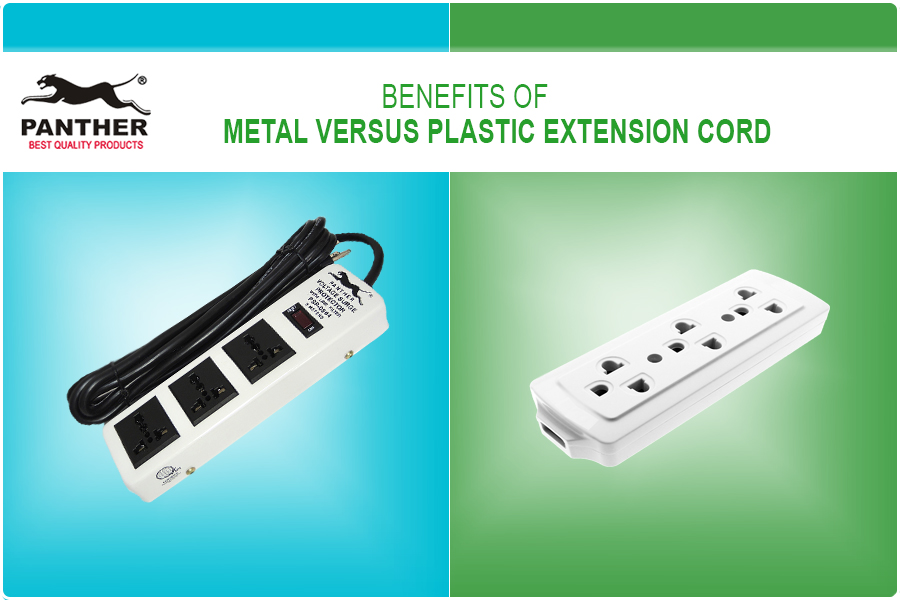
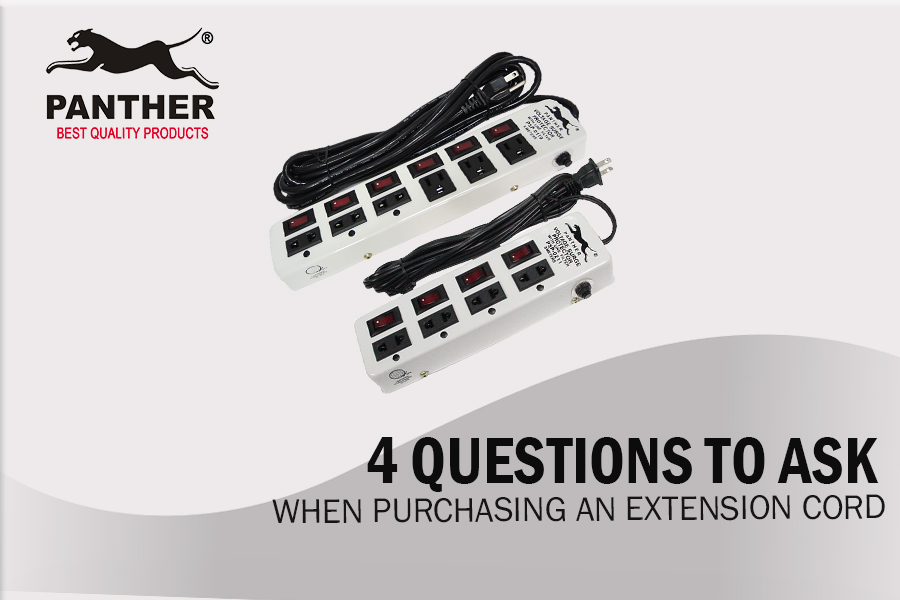
0 Comments